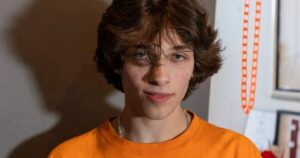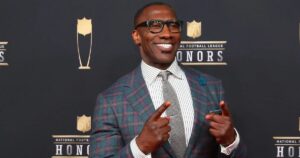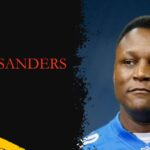Understanding Lip Filler Migration delves into the phenomenon where injected dermal fillers, commonly used to enhance lip volume and shape, shift from their original placement. This migration can occur due to various factors, causing the fillers to move away from the injection site over time. It’s essential to comprehend the causes, signs, and potential complications associated with this process.
Factors contributing to migration might include natural facial movements, improper injection techniques, or the type of filler used. Recognizing signs such as asymmetry, lumps, or changes in lip appearance is crucial for early detection. Preventative measures and management strategies play a pivotal role in minimizing migration risks and addressing any complications.
Experience lip filler before and after enhancement procedures, emphasizing skilled practitioners and informed decisions in cosmetic treatments.
Causes of Lip Filler Migration

Several factors contribute to lip filler migration, causing the injected dermal fillers to shift from their original placement:
Facial Movements
Facial movements encompass a spectrum of expressions and gestures involving facial muscles. Activities like smiling, talking, and chewing dynamically engage these muscles. In terms of lip filler migration, repetitive or exaggerated facial movements can gradually displace injected fillers, causing them to shift from their original placement.
These natural motions, though essential for communication and expression, contribute to the redistribution of fillers over time. Understanding the impact of facial movements aids in recognizing their role in filler displacement and emphasizes the need for careful consideration and skilled application during cosmetic procedures to mitigate potential migration risks.
Injection Technique
Injection technique refers to the method used by practitioners to administer substances like fillers or medications into the body. In cosmetic procedures like lip enhancements, a proper injection technique is pivotal.
It involves precision in placement, depth, and angle of the needle to ensure even distribution and desired results. Skilled practitioners employ techniques that minimize discomfort, reduce the risk of complications such as migration, and enhance the effectiveness of the treatment.
A well-executed injection technique is crucial for achieving natural-looking and symmetrical results in cosmetic procedures, emphasizing the importance of expertise and experience in the field.
Type of Filler
The type of filler used in cosmetic procedures significantly impacts lip enhancement outcomes. Various fillers exist, categorized by their composition—commonly hyaluronic acid-based or collagen-based. Hyaluronic acid fillers, known for their natural feel and reversible effects, are popular for lip augmentation. Collagen-based fillers, though less commonly used due to potential allergic reactions, offer a different texture and longevity.
Other synthetic or semi-permanent fillers provide lasting results but carry distinct risks. Choosing the appropriate filler depends on desired results, longevity, and potential risks, emphasizing the importance of informed discussions between patients and practitioners for safe and satisfactory outcomes.
Tissue Integration
Tissue integration refers to the process where injected substances, like dermal fillers, merge or blend with surrounding tissues. This integration varies based on filler composition and the body’s response. Ideally, fillers integrate seamlessly, harmonizing with the natural tissues for a more natural appearance and longevity.
However, variations in tissue compatibility or filler characteristics can influence integration, potentially affecting filler stability and the likelihood of migration over time. Understanding tissue integration is crucial in predicting how fillers interact with the body, guiding practitioners in selecting suitable products and enhancing the overall success of cosmetic procedures.
Gravity and Pressure
Gravity and pressure exert notable influences on various aspects, including lip filler migration. Gravity’s constant force may gradually displace injected fillers, particularly in areas subject to downward pressure, like the lips. External pressures, such as habitual habits like lip biting or aggressive massaging, can also affect filler distribution.
Over time, these forces contribute to the movement or shifting of fillers from their original placement. Understanding these effects underscores the need for careful consideration and management to mitigate potential complications in cosmetic procedures involving fillers.
Understanding these causes is crucial in managing and preventing lip filler migration, highlighting the importance of skilled practitioners, proper techniques, and informed decisions in cosmetic procedures.
Causes of Lip Filler Migration
Lip filler migration occurs due to various factors. Natural facial movements like smiling or talking, alongside improper injection techniques, can displace fillers over time. Certain filler types may be more prone to shifting due to their composition or integration with surrounding tissues.
Additionally, external factors such as gravity and repeated pressure on the lips contribute to filler movement. Understanding these causes emphasizes the significance of skilled practitioners and informed decisions to mitigate risks and manage potential complications associated with lip filler migration in cosmetic procedures.
Signs and Symptoms of Lip Filler Migration

Signs and symptoms indicating lip filler migration include:
Asymmetry
Asymmetry refers to the lack of symmetry or balance between two sides or parts. In the context of lip filler migration, asymmetry manifests as noticeable irregularities or differences in the shape, size, or contour of the lips. It occurs when fillers shift from their original placement, leading to an uneven appearance. Detecting asymmetry in lip appearance signifies potential displacement of fillers, necessitating attention from qualified practitioners for corrective measures.
Lumpiness
Lumpiness refers to the presence of irregular nodules or bumps in the lips, often indicating displaced or migrated filler material. These lumps can alter the smoothness of the lip surface, causing uneven contours or visible bumps. Recognizing and addressing lumpiness is essential as it may signify the need for corrective measures to restore the natural appearance and symmetry of the lips affected by filler migration.
Changes in Appearance
Changes in appearance related to lip filler migration involve visible alterations in the lips’ contours, symmetry, or overall shape. These changes deviate from the initial desired aesthetic, showcasing irregularities, bulging, or unevenness. Identifying such alterations prompts the need for attention and potential corrective measures by skilled professionals to address the displaced fillers and restore the lips’ natural or desired appearance.
Pain or Discomfort
Pain or discomfort in the lips can signal potential issues like lip filler migration. Sensations of tenderness or discomfort may arise due to displaced fillers affecting the lip’s natural texture or movement. Recognizing these sensations is crucial in identifying possible complications, prompting individuals to seek evaluation and appropriate care from skilled practitioners in cosmetic procedures to address and manage any concerns regarding lip filler migration.
Reduced Filler Effect
Reduced filler effect refers to the gradual diminishment of the desired volume or plumpness achieved by lip fillers over time. As fillers migrate or break down, the initial enhancement diminishes, leading to a lessened appearance of fullness or contouring in the lips. This reduction in the filler’s efficacy may prompt individuals to seek touch-ups or corrective measures to restore the desired aesthetic outcome. Regular maintenance and consultations with practitioners are crucial to managing this effect.
Recognizing these signs and symptoms is crucial. Early detection allows for timely intervention and corrective measures by experienced practitioners to address lip filler migration and minimize potential complications.
Prevention and Management of Lip Filler Migration

Preventing and managing lip filler migration involves several strategies. Employing skilled and experienced practitioners for injections minimizes the risk of improper placement. Opting for thicker or more cohesive filler formulations reduces the likelihood of migration. Massage protocols after injections, as advised by professionals, can help evenly distribute fillers.
Regular follow-ups with practitioners allow early detection of migration, enabling prompt corrective measures. Avoiding excessive pressure or trauma to the lips and adopting facial exercises to strengthen surrounding muscles aids in preventing migration. Diligent care and practitioner guidance are key to effectively preventing and managing lip filler migration for optimal results and reduced complications.
Seeking Treatment for Lip Filler Migration

Seeking treatment for lip filler migration involves several steps:
Consultation
A consultation for lip filler migration involves meeting with a qualified practitioner to assess the extent of filler displacement. During this session, the practitioner evaluates the lips, discussing any irregularities or discomfort caused by migration.
They provide insights into treatment options, discussing potential solutions like massage techniques, dissolving agents, or corrective injections. This initial consultation lays the foundation for devising a personalized treatment plan tailored to address the specific concerns related to lip filler migration.
Evaluation
Evaluation of lip filler migration involves a thorough assessment by a qualified practitioner. This examination considers the lips’ appearance, assessing any asymmetry, lumps, or irregularities caused by filler displacement.
The practitioner evaluates the extent of migration, noting any associated discomfort or changes in the lips’ contours. This detailed evaluation guides the selection of appropriate treatment options to address the migration effectively and restore natural-looking lip aesthetics.
Treatment Option
Treatment options for lip filler migration include various approaches tailored to the severity of migration. These can range from non-invasive methods like massage techniques to redistribute displaced fillers, to more involved procedures such as using dissolving agents to break down misplaced fillers.
Corrective injections may also be administered to adjust and balance lip volume. The chosen treatment is determined by a skilled practitioner after evaluating the extent of migration for optimal results.
Follow-Up Care
Follow-up care post lip filler procedures is crucial for optimal results. It involves adhering to practitioner guidelines, which may include avoiding strenuous activities, refraining from touching or pressing on the treated area, and following a prescribed skincare routine.
Scheduled follow-up appointments allow practitioners to assess healing progress, address concerns, and perform any necessary adjustments. Diligent adherence to follow-up care instructions ensures proper healing, reduces complications, and maximizes the desired outcome of the lip enhancement procedure.
Seeking prompt and professional treatment for lip filler migration ensures corrective measures are tailored to address the issue effectively, restoring natural-looking and balanced lip contours.
Long-Term Effects and Risks of Lip Filler Migration
Certainly, here’s a basic chart outlining long-term effects and risks associated with lip filler migration:
| Long-Term Effects and Risks of Lip Filler Migration |
| Asymmetry |
| Uneven or asymmetrical lip appearance. |
| Lumpiness |
| Formation of lumps or nodules in the lips. |
| Chronic Discomfort |
| Persistent pain or discomfort due to displaced fillers. |
| Reduced Filler Effect |
| Gradual loss of volume or plumpness initially achieved. |
| Complications |
| Potential complications like infections or granulomas. |
This chart provides an overview of potential long-term effects and risks associated with lip filler migration, emphasizing the importance of early detection and professional management.
Expert Insights: Lip Filler Migration Explained
Expert insights on lip filler migration delve into the complexities behind filler movement post-injection. Professionals elucidate factors contributing to migration, such as injection techniques, filler properties, and natural facial movements. They emphasize the importance of skilled practitioners and suitable filler choices to minimize migration risks. Insights also highlight early detection through recognizing signs like asymmetry or lumps.
Experts stress the significance of tailored treatments, including massaging techniques or corrective injections, ensuring natural-looking results. Their knowledge underscores the need for comprehensive understanding, skillful application, and meticulous management to address lip filler migration effectively in cosmetic procedures.
Addressing Lip Filler Migration: Tips and Recommendations
Addressing lip filler migration involves several tips and recommendations:
Consult Skilled Practitioners: Seek guidance from experienced professionals for assessments and tailored solutions.
Early Detection: Recognize signs like asymmetry or lumpiness to address migration promptly.
Consider Corrective Measures: Explore options like massaging techniques or dissolving agents for displaced fillers.
Follow-Up Care: Adhere to post-treatment instructions and schedule follow-up appointments for assessments or adjustments.
Prevention Strategies: Opt for thicker fillers, avoid excessive pressure on the lips, and employ facial exercises to strengthen surrounding muscles to prevent migration.
Routine Follow-Ups: Regularly consult practitioners for maintenance and advice to manage any potential migration effectively.
Implementing these recommendations ensures proactive measures to manage and prevent lip filler migration, promoting natural-looking and balanced results in cosmetic procedures.
FAQ’s
Does lip filler migration go away?
No need to panic as treating lip filler migration is a very simple process. As lip filler is not permanent, a simple approach is just to avoid any further lip filler treatments until your body has time to break down some of the migrated filler.
Can 0.5 ml lip filler migrate?
0.5ml of lip filler is less likely to migrate when injected by a skilled professional such as ourselves at Tailored Aesthetics. Migration of filler can occur when larger amounts are used or if it is improperly injected into the wrong areas.
Can kissing cause filler migration?
The second reason is to allow enough time for the filler to fully integrate with the lip tissue, as the pressure from kissing can (potentially) cause the filler to migrate. “This can lead to unevenness, where one side of the lips is fuller than the other because the product has moved to that side.
How quickly can lip filler migrate?
Migration is not always an immediate side effect, as it can take weeks or months to occur.
How do I fix filler migration?
It’s not harmful if it moves, but aesthetically, it isn’t the desired result. In that case, “your injector can dissolve filler with hyaluronidase, an enzyme that breaks down the hyaluronic acid used for fillers,
Conclusion
Addressing lip filler migration necessitates a multifaceted approach involving skilled practitioners, early detection, and tailored treatments. Understanding the causes and recognizing signs of migration are pivotal for timely interventions. Seeking experienced guidance and following post-treatment care instructions mitigate migration risks.
With diligent management and proactive measures, such as prevention strategies and routine follow-ups, complications can be minimized. These concerted efforts ensure effective management of lip filler migration, promoting natural-looking outcomes and enhancing the safety and satisfaction of individuals seeking cosmetic enhancements for their lips.











